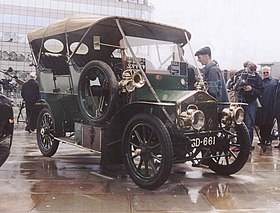












Relux รถเข็นเหล็กคีย์ออส สำหรับโชว์สินค้า/จำหน่ายสินค้า/เป็นเฟอร์นิเจอร์ รุ่นคลาสสิค Classic *สต้อกราคาพิเศษ เปลี่ยนแปลงไม่ได้*
28 มีนาคม 2565
ผู้ชม 7478 ผู้ชม
Relux รถเข็นเหล็กคีย์ออส สำหรับโชว์สินค้า/จำหน่ายสินค้า/เป็นเฟอร์นิเจอร์ รุ่นคลาสสิค
- Model : Classic
- ทำจากเหล็กที่มีความแข็งแรงคงทน ดูเสมือนจริง มีระดับ
- รูปลักษณ์สวยงาม เหมือนรถจริง ช่วยเพิ่มบรรยากาศรอบข้างให้ดูหรูหรา
- ใช้งานได้หลายรูปแบบ ไม่ว่าจะตกแต่งบ้าน เป็นเฟอร์นิเจอร์สร้างบรรยากาศภายในบ้าน
- เป็นจุดถ่ายรูป และจุดดึงดูดความสนใจ เพื่อให้ลูกค้าเข้าร้าน
- หลังคาสามารถถอดลงมาได้ เพื่อความสะดวกสำหรับการขนย้าย
- เข็นเคลื่อนย้ายได้ง่ายด้วยล้อไฮโดรลิคที่ช่วยผ่อนแรง
- สามารถเปิดใช้งานได้ทั้ง4ด้าน
- ใต้รถมีช่องเก็บของ หรือสต็อครอบคัน พร้อมกุญแจล็อค
- หน้าต่างสามารถวางนอนเพื่อทำเป็นชั้นวางเครื่องคิดเงิน
- ไฟแสงสว่างรอบคัน
- ผลิตจากวัสดุทนน้ำ ทนแดด ทนละอองฝน ทนความร้อนได้เป็นอย่างดี
- ภายในมีวางระบบไฟฟ้า ไว้เสียบเครื่องใช้ไฟฟ้า
- มีอะไหล่สำหรับซ่อมแซมได้ตลอดเวลาจากผู้ผลิตในประเทศไทย
- ขนาดภายนอก 80 x 220x 190 cm.
- น้ำหนัก 176 กก.
Factory Code : MPC-01F
Model : Classic Full Option
Dimension (cm.) : 80 X 220 X 190
Crate Size Estimated (cm.) : 92 X 245 X 136
Net Weight (Kgs.) : 196
History :
Our Classic Kiosk is develop from Rolls-Royce 15 hp Since 1905
| Rolls-Royce 15 hp | |
|---|---|
 |
|
| Overview | |
| Manufacturer | Royce Limited |
| Production | 1905 6 made[1] |
| Designer | Sir Henry Royce |
| Powertrain | |
| Engine | 3000 cc 3-cylinder. |
| Transmission | three-speed |
| Dimensions | |
| Wheelbase | 103 in (2,616 mm) |
The Rolls-Royce 15 hp was one of four cars to be produced as a result of an agreement of 23 December 1904 between Charles Rolls and Henry Royce.[2] Badged as a Rolls-Royce,[3] the 15 hp was produced by Royce's company, Royce Ltd., at its factory in Cooke Street, Hulme, Manchester. It was sold exclusively by Rolls' motor dealership, C.S.Rolls & Co., at a price of GBP500.[1][4] The 15 hp was exhibited at the Paris Salon in December 1904, along with the 10 hp, 20 hp and engine for the 30 hp models, but as the new three-cylinder engine was not ready the chassis was incomplete.
Three-cylinder engines were quite popular in the early years of motoring, and one was part of the ambitious programme of the new company. The layout produced less vibration than 2-cylinder engines and was much simpler to make than a six-cylinder with its long crankshaft. However, Royce was making his range of engines using a standard two-cylinder block, putting two together for the four-cylinder and three for the six. The three-cylinder engine did not fit in with this production, having each of its cylinders cast separately, and this is thought to be the reason why only six were made. The engine, which has a bore of 4 in (102 mm) and stroke of 5 in (127 mm), is water-cooled and of 3000 cc capacity with overhead inlet and side exhaust valves. A high-tension ignition system using pre-charged accumulators, a trembler and a coil provides the ignition spark. As the lighting supplied uses oil, there is no other drain on the accumulators.The power output is 15 bhp (11 kW) at 1000 rpm.[5] The engine speed is controlled by a governor that can be over-ridden by the pedal controlled accelerator. A three-speed gearbox is used, connected to the engine via a short shaft and a leather cone clutch is used.
The car has a top speed of 39 mph (63 km/h).[1] There is a transmission brake fitted behind the gearbox operated by foot pedal and internal expanding drum brakes on the back axle operated by the handbrake lever. Springing is by semi-elliptic leaf springs on both front and rear axles with an additional crossways helper spring on the rear of some of the cars. Artillery type wheels were fitted.
Rolls-Royce did not provide the coachwork. Instead, the cars were sold in chassis form for the customer to arrange his own body supplier, with Barker recommended.
Only one car, registered SD 661, is known to survive.[6]
